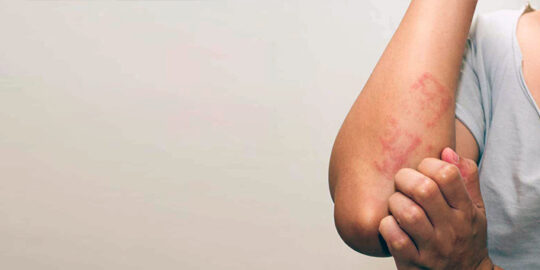Tinea Infections – Introduction and Primary Practices for General Practitioners

- Friday 5th March, 2021
- | Uncategorized
Tinea infections are nowadays notorious to treat and yes, we already know that. Talking about the reasons, there are several, like- self-medication, steroid misuse, not completing courses, etc.
To those who are new to the term, Tinea is a contagious fungal skin infection. The most commonly affected areas include the feet, groin, scalp and beneath the breasts. Tinea can spread by skin-to-skin contact or indirectly through towels, clothes or floors. Tinea is also known as ringworm, which is a misleading term as no worm is involved.
Research indicates that, General Practitioners are the first face the patients when it comes to Tinea infection and several other skin diseases. Thus, we believe that they play a major role in preventing Tinea – slow epidemic, its complications and development of its resistance.
Below are the few primary practices which can be promoted to the patients at General Practitioners’ level:
- Take a bath twice a day. Make sure you dry yourself completely after your bath. This will keep you away from fungal infections.
- Avoid wearing tight clothes and tight undergarments. Prefer wearing loose cotton clothes.
- Avoid wearing tight shoes.
- Do not walk barefoot in wet areas such as swimming pools. Keep your feet covered at all times. Change your socks if they get wet.
- Wash your clothes separately.
- Make sure you wash your towel, your clothes and your undergarments every day and dry them in the sunlight; wear all clothes only after ironing them.
- If you get a skin rash, do not scratch it with your nails. If your nails are infected, keep a separate nail cutter for them.
- In cases where you have contracted a contagious disease, avoid having a physical relationship.
- Do not exchange clothes with other people, whether it’s family or friends.
- If you contract a contagious skin disease, get it treated by a skin specialist (a dermatologist) immediately.
- If you are given a medicinal course as part of the treatment, make sure that you take your medicines regularly and complete your course.
- If any of your family members develop a contagious skin disease, take them to a dermatologist at the earliest.
- Your pets may become carriers of any contagious diseases. Therefore, keep away from unclean pets. If you own a pet, get them checked with a veterinarian on a regular basis. Secondly, following are the things to be considered while treating Tinea patients:
- Give them adequate antihistamine.
- Give them plain anti fungal and avoid the use of steroid.
- Use mono-drug as far as possible.
- Spread topical cream 1-2 cm surrounding the lesion.
- Continue topical and oral medication 15-30 days even after the clearance of the lesions, as required.
- Use anti fungal powder over moist areas of body- flexures.
